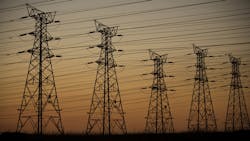US Power Grid Vulnerable to Terrorist Attack
The U.S. power grid is susceptible to terrorists and could take weeks or even months to repair if attacked, a study warns.
The findings come shortly after megastorm Sandy hit New York City and the New Jersey coast late last month, causing widespread devastation and outages.
"The U.S. electric power delivery system is vulnerable to terrorist attacks that could cause much more damage to the system than natural disasters such as Hurricane Sandy, blacking out large regions of the country for weeks or months and costing many billions of dollars," said the report by the National Research Council released Wednesday.
Many parts of the high-voltage system are heavily stressed, leaving it particularly at risk to multiple failures in the wake of an attack. In addition, important pieces of equipment are decades old.
Many key facilities are unguarded and high-voltage transformers are of particular concern because they are vulnerable both from within and from outside substations, the study says.
The transformers, very large in size, are also difficult to replace because most are no longer made in the United States and the delivery time for new ones could run from months to years.
As a solution, the report suggests developing, manufacturing and stockpiling "a family of universal recovery transformers" for temporary use that would be easier to move to where they're needed and "could drastically reduce delays in restoring disabled electric power systems."
The network is also vulnerable to cyber attacks, the report warned.
"Cyber attacks are unlikely to cause extended outages, but if well coordinated they could magnify the damage of a physical attack," it said. "For example, a cascading outage would be aggravated if operators did not get the information to learn that it had started, or if protective devices were disabled."
The National Research Council finished the report in the fall of 2007 and it was then classified by the U.S. Department of Homeland Security.
But the key findings of the report remain "highly relevant," said the report's foreword.
Copyright Agence France-Presse, 2012
About the Author
Agence France-Presse
Copyright Agence France-Presse, 2002-2025. AFP text, photos, graphics and logos shall not be reproduced, published, broadcast, rewritten for broadcast or publication or redistributed directly or indirectly in any medium. AFP shall not be held liable for any delays, inaccuracies, errors or omissions in any AFP content, or for any actions taken in consequence.
